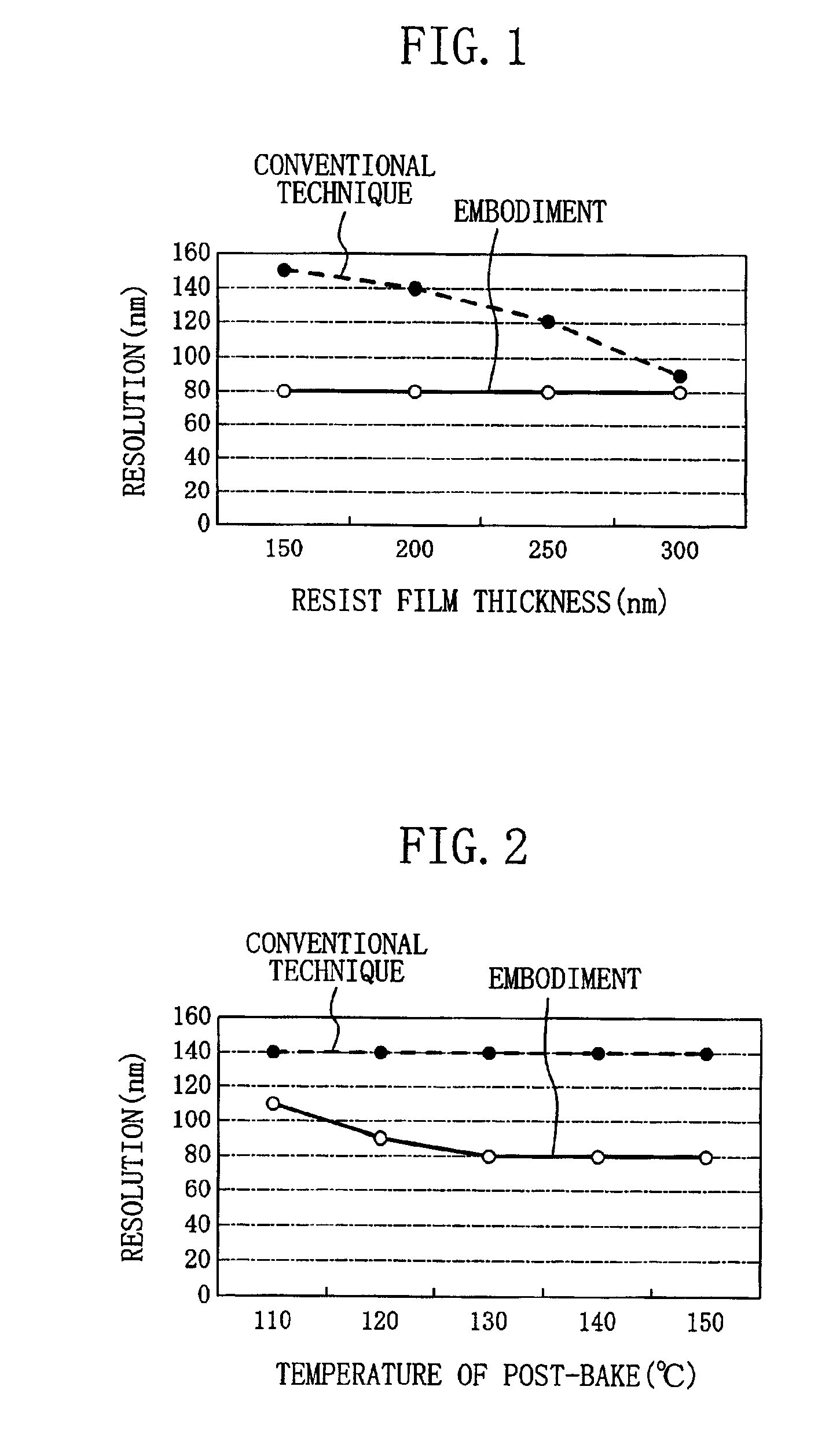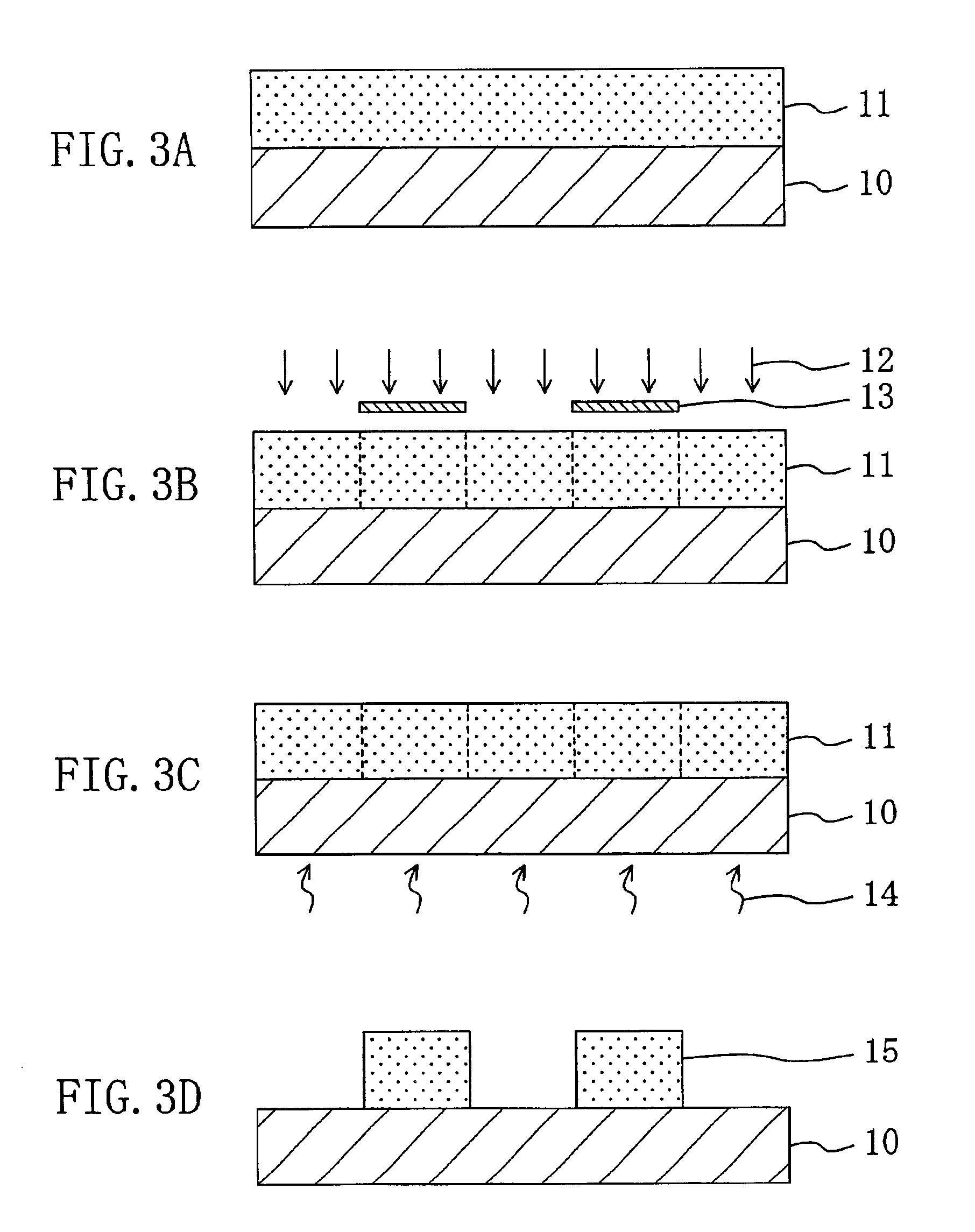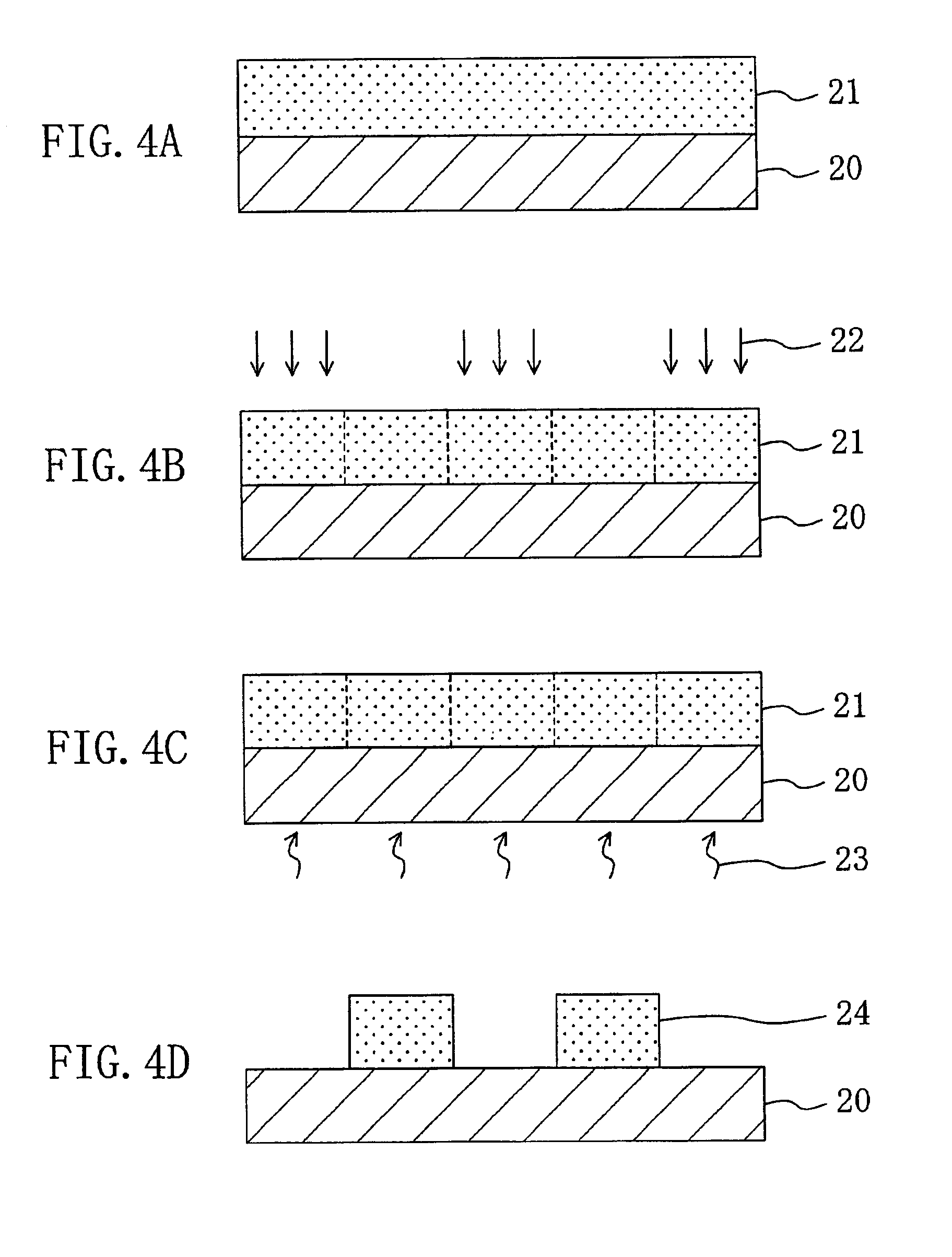Pattern formation method
a formation method and pattern technology, applied in the field of pattern formation methods, can solve the problems of difficult dissolution of base polymers in alkaline developers, and achieve the effect of suppressing resolution and preventing the reduction of contrast in solubility
- Summary
- Abstract
- Description
- Claims
- Application Information
AI Technical Summary
Benefits of technology
Problems solved by technology
Method used
Image
Examples
synthesis example 3
of Base Polymer
[0125]Now, an example of the synthesis of poly(p-hydroxystyrene / styrene / 1-adamantyl acrylate), that is, the base polymer represented by general formula (6), will be described.
[0126]First, p-hydroxystyrene (87.7 g), styrene (18.7 g) and 1-adamantyl acrylate (18.6 g) are dissolved in isopropanol (400 mL). Thereafter, 2,2′-azobis(methyl 2-methylpropyonate) (trade name: V-601; manufactured by Wako Pure Chemical Industries, Ltd.) (10.0 g) is added to the resultant solution, and a reaction is caused in a stream of nitrogen at a temperature of 80° C. for 6 hours.
[0127]Next, the resultant reaction product is poured into water (10 L) so as to precipitate, and the thus obtained deposit crystal is filtered and dried under reduced pressure to give a slightly brown powder crystal (100 g) of poly(p-hydroxystyrene / styrene / 1-adamantyl acrylate). The composition ratios in this copolymer measured by the 13C-NMR method are 73:18:9 (=a p-hydroxystyrene unit: a styrene unit: a 1-adamantyl...
synthesis example 1
of Acid Generator
[0128]Now, an example of the synthesis of diphenyl-2,4,6-trimethylphenylsulfonium pentafluorobenzenesulfonate, that is, the compound represented by general formula (1), will be described.
[0129](First stage)
[0130]First, diphenyl sulfoxide (24.0 g) is dissolved in tetrahydrofuran (600 mL) in an atmosphere of nitrogen, and chlorotrimethylsilane (31.5 g) is poured into the resultant solution. Then, a Grignard reagent obtained by a general method from 2-bromomesitylene (60 g) and magnesium (4.70 g) is added dropwise to the resultant solution cooled with ice, and a reaction is caused for 3 hours at the same temperature. After completing the reaction, a 24% hydrobromic acid aqueous solution (480 mL) is added dropwise to the reaction solution at a temperature of 0 through 5° C. Thereafter, toluene (600 mL) is poured into the resultant solution and the solution is stirred. Next, the stirred reaction solution is separated, and an organic layer is extracted with a 12% hydrobro...
synthesis example 2
of Acid Generator
[0137]Now, an example of the synthesis of triphenylsulfonium pentafluorobenzenesulfonate, that is, the compound represented by general formula (1), will be described.
[0138](First stage)
[0139]A white crystal (20.2 g) of triphenylsulfonium bromide is obtained through a reaction and a post-treatment the same as those of the first stage of the synthesis example 1 of the acid generator except that 2-bromomethylene used at the first stage of the synthesis example 1 is replaced with bromobenzene (47.3 g). The characteristics of the obtained white crystal are as follows:
[0140]Melting point: 288 through 290° C.
[0141]1HNMR (CDCl3) δ ppm: 7.72-7.89 (I5H, m, Ar-H)
[0142](Second stage)
[0143]The triphenylsulfonium bromide (17.2 g) obtained at the first stage and a salt of tetramethylammonium pentafluorobenzenesulfonate (20.9 g; 0.065 mol) are used for performing a reaction and a post-treatment the same as those of the second stage of the synthesis example 1, to give a colorless vi...
PUM
| Property | Measurement | Unit |
|---|---|---|
| thickness | aaaaa | aaaaa |
| wavelength | aaaaa | aaaaa |
| wavelength | aaaaa | aaaaa |
Abstract
Description
Claims
Application Information
 Login to View More
Login to View More - R&D
- Intellectual Property
- Life Sciences
- Materials
- Tech Scout
- Unparalleled Data Quality
- Higher Quality Content
- 60% Fewer Hallucinations
Browse by: Latest US Patents, China's latest patents, Technical Efficacy Thesaurus, Application Domain, Technology Topic, Popular Technical Reports.
© 2025 PatSnap. All rights reserved.Legal|Privacy policy|Modern Slavery Act Transparency Statement|Sitemap|About US| Contact US: help@patsnap.com



